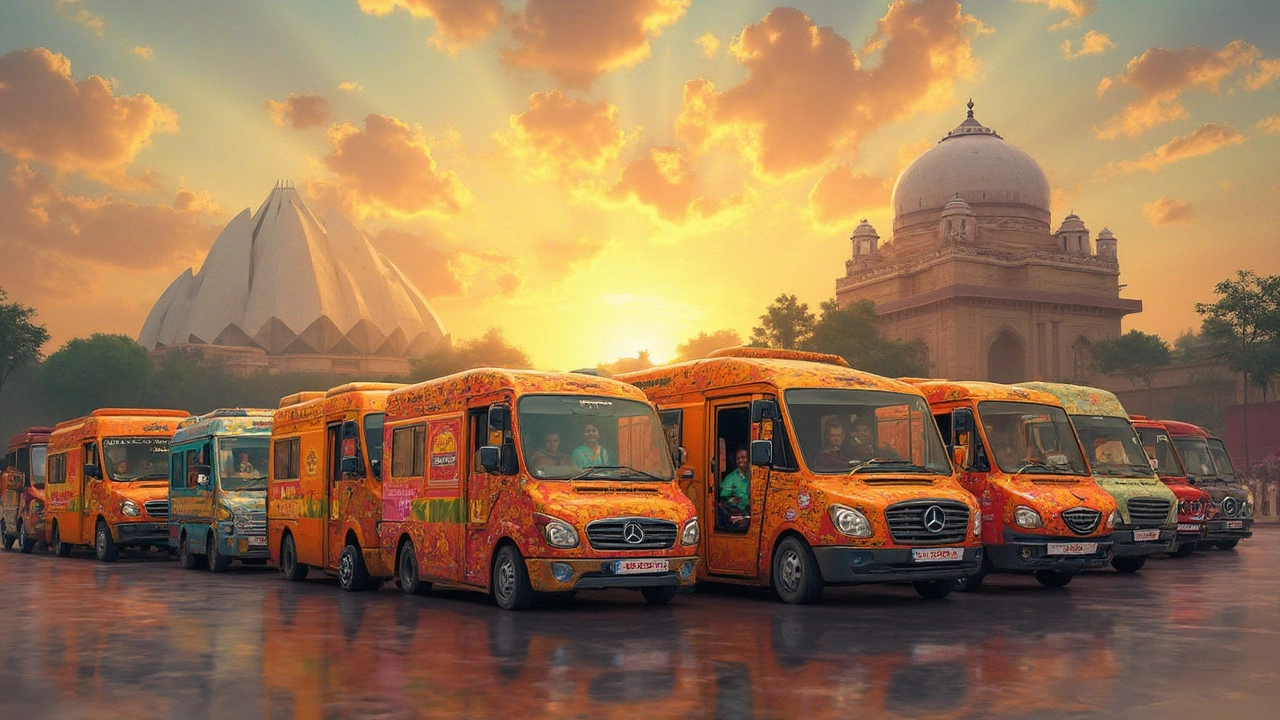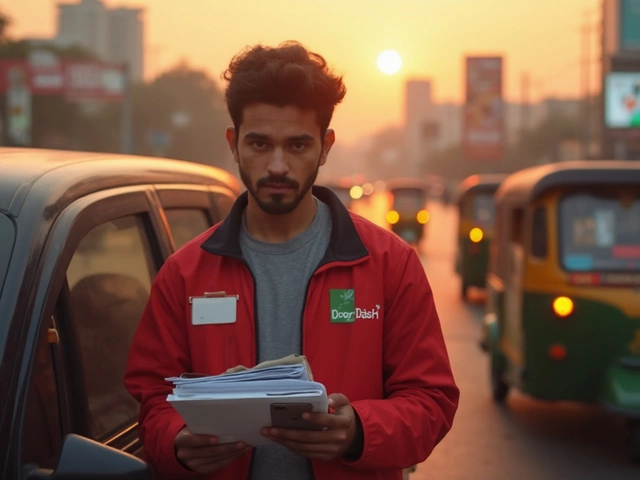Thinking of starting a courier business? You're going to need more than just a van and a GPS. The right equipment can be your secret weapon for success. Choosing the right vehicle is crucial. You want something reliable, fuel-efficient, and spacious enough to handle your typical cargo size. Whether it's a scooter for quick city deliveries or a van for larger shipments, your choice can significantly impact your bottom line.
Technology plays a massive role too. Investing in software to manage deliveries and communicate with customers can save you time and headaches. Think route optimization apps or live tracking features. They can enhance the customer experience and ensure that your deliveries are always on time.
- Choosing the Right Vehicle
- Technology and Software
- Safety and Security Gear
- Packaging and Handling Equipment
Choosing the Right Vehicle
When launching a courier business, picking the right vehicle is one of your biggest choices. Your vehicle needs to be reliable and cost-effective, as it’ll be on the road a lot. Also, it should suit the types of deliveries you plan to make.
The Basics of Vehicle Selection
First off, figure out what you're delivering. Scooters or motorcycles are great for smaller parcels and navigating through city traffic. They're also more economical on fuel. On the other hand, a van or truck is essential if you plan to handle bulky or large volumes. Think about what aligns best with your business model.
Don’t forget to consider your travel area. If you're sticking to urban areas, a smaller, more compact vehicle may suit you better. But for rural routes, something sturdier with better fuel efficiency might be necessary.
Cost and Efficiency
The price tag isn’t just about the initial purchase. Maintenance, fuel, insurance, and depreciation can add up quickly. Look for vehicles known for their durability and low maintenance costs. Fuel efficiency is a biggie. According to a report by the American Transportation Research Institute, fuel can be around 24% of total operating costs, so choose wisely. A few extra miles per gallon can save a ton over time.
Environmental Considerations
Going green isn’t just a fad. Many customers appreciate businesses that reduce their carbon footprint. Hybrid or electric vehicles can be pricier upfront but might bring savings with tax incentives and lower fuel costs. Plus, they can be a selling point, as some clients specifically look for eco-friendly services.
Table of Common Courier Vehicles
| Type | Ideal For | Cost |
|---|---|---|
| Scooter | Small packages, urban areas | Low |
| Van | Medium to large packages | Moderate |
| Truck | Bulky items, long-distance | High |
| Electric Car | Eco-friendly options | High |
Choosing the right vehicle is like setting the foundation of your courier business. By making wise decisions from the get-go, you set yourself up for efficiency, satisfaction, and profits down the line.
Technology and Software
In the modern courier business, technology isn't just an extra; it's a key piece of the puzzle. Tech tools and software can help you keep tabs on every package and every move you make, which is vital for maintaining an efficient service.
Route Optimization Tools
Route optimization software is a lifesaver. It helps plan the best routes, cutting down on fuel costs and saving time. No more guessing or relying on old maps. Most apps provide real-time updates and even traffic alerts, making changes on the fly super easy.
Delivery Management Systems
Delivery management software is worth its weight in gold. It consolidates all your orders in one place, making it a breeze to track deliveries and statuses. Features often include automated dispatching, which takes the hassle out of assigning jobs to drivers.
Customer Communication
Good communication is the backbone of any delivery service. Customers love knowing exactly when their packages will arrive. Tools that send automatic updates, ETA alerts, and delivery confirmations boost the customer experience. It's all about keeping them in the loop.
Fleet Tracking Systems
For those running multiple vehicles, a fleet tracking system is a must-have. It provides overview data on where each vehicle is and its job status. This keeps the whole operation running smoothly and can even help in case of any disputes over delivery times.
| Technology Tool | Benefit |
|---|---|
| Route Optimization | Save Time and Fuel |
| Delivery Management | Streamlined Operations |
| Customer Communication | Enhanced Customer Experience |
| Fleet Tracking | Real-time Vehicle Data |
Keeping up with tech trends in the courier business space ensures you're operating at your best and giving customers what they want—a quick, reliable service.

Safety and Security Gear
Running a courier business means you've got to think about both the safety of your team and the security of the parcels they're delivering. Let's dive into what's essential here.
Personal Safety Equipment
First up, ensure your drivers are equipped with the right safety gear. Helmets for those on scooters or motorbikes are a no-brainer. High-visibility vests are also super handy, especially for night-time deliveries or areas with poor lighting.
Vehicle Safety
Then there's vehicle safety. Regular maintenance is key, but adding some extras can make a difference. Consider dash cams to record deliveries and handle any disputes or incidents easily. Installing GPS trackers not only helps with route efficiency but acts as a theft deterrent too.
Package Security
From a package perspective, securing the goods you're delivering is crucial. Using lockable, waterproof containers can protect against both theft and the elements. In some cases, tamper-proof seals are worth the investment, especially if you're handling sensitive or high-value items.
- Helmets and high-visibility vests for drivers
- Dash cams and GPS trackers for vehicles
- Lockable, waterproof delivery containers
- Tamper-proof seals for high-value packages
Recent Trends
Thanks to tech advances, there are now smart locks and sensors that alert drivers if a container is opened when it shouldn't be. These gadgets can give an added layer of security, ensuring that parcels reach their destination without a hitch.
Packaging and Handling Equipment
In the courier business, how you package and handle items can make or break your service. It’s not just about getting parcels from point A to point B; it’s about ensuring they arrive in one piece. Let's dig into the key equipment you should consider.
Essentials for Secure Packaging
First things first, durable packaging materials are a must. Invest in high-quality boxes, bubble wrap, and packing peanuts to cushion those fragile items. You might be surprised at how much a few rolls of good packing tape can save you in lost or damaged goods. Strong adhesive keeps things intact, regardless of bumps on the road.
Handling Tools
When dealing with heavier packages, having the right equipment can save your back. Dollies and hand trucks are great for moving bulkier items without breaking a sweat. For added safety, invest in some lifting straps to distribute weight evenly and reduce the risk of injury.
Labeling and Tracking
Clear labels are vital to make sure every parcel ends up in the right hands. Consider using a printing station to quickly generate labels. It's not just about addresses; tracking labels help you and your customers know exactly where a package is at any time. This can elevate your delivery services and boost customer satisfaction.
| Equipment | Estimated Cost ($) |
|---|---|
| Packing Materials (per box) | 1-3 |
| Hand Truck | 50-150 |
| Label Printer | 100-200 |
At the end of the day, having the right handling equipment is all about efficiency and reliability. Make sure your tools evolve with your business needs, and you'll stay ahead in the game.





